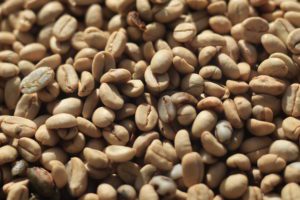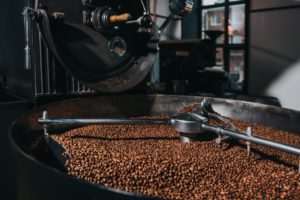Many different types and preparations of coffee are hyped up these days. It’s hard to know which types of coffee merit our attention. Is it coffee from the coffee-famous countries in Central and South America? Is the magic in the altitude or the roast? What about roasting in small batches, does it matter? These are only some of the considerations when trying different coffees.

With the current emphasis on knowing where your food and goods come from, are single-origins really the end-all? And if so, the most dizzying question of all would be: what incredible single origin should you be looking for, if you’re only choosing one origin at a time? We’re just kidding, but it is important to consider where and how your coffee is grown, harvested, processed and roasted. The nature of the links in the chain that bring the coffee to you are important too.
Today, we look at coffee roast profiles specifically. We’ll attempt to separate roast profiles from concerns about geography, altitude, batch size and other factors. (However, that doesn’t mean we can stay quiet about the delicious coffees coming out of Honduras!) We rest assured that as millennials and GenZ take over, more conscious purchasing will dominate. Today, we just know for sure that purchasing stellar coffee from a region where the good of each purchase can echo throughout the community can put your mind at ease.
Coffee Roast Profile Breakdown
Whether they are blends or single origins, no two coffees are the same. So many different factors affect a coffee’s flavor that exploring them can feel like a whirlwind of levers on flavor. From elevation to rainfall, to the time coffee fruit is picked, details that can change flavor abound.
Coffee roast profiles vary. The most common ones are light, medium, dark and French. Light roasts take less time and involve less heat. On the other end, dark roast lovers delight in the results of long, higher-temperature processes. For a darker, smoky flavor, try a French roast.
Bean Properties
Although time and temperature are the most famous components of a coffee roast, the properties of the beans themselves are the first starting point. Several coffee-bean-based factors affect the outcome of the roast, in terms of getting the coffee into one category or another. For example, high-altitude coffee beans have less moisture stored in the beans. That’s because the moisture drains down quickly in mountainous regions.
Glancing at different types of beans before starting to roast, the following factors may differ:
- Moisture content (whether there is more or less moisture stored in the bean)
- Density
- Hardness
- Bean shape (rounder or longer)
Forgetting about the beans’ shape could be a novice roaster’s error, for example. Pointy ends get charred faster. It takes a watchful eye to note bean shape tendencies. In small batches, it takes time to sort before roasting.

Roast Control & Consistency
After controlling for the beans’ makeup, it’s important to use a standardized color analyzer. It calibrates the flavor profile. Getting consistent roasts across widely varying coffees is still challenging. However, putting numbers and colors to the selected beans helps a lot.
Nowadays, there is even software to assist roasters. Roast profile-logging software can keep track of data to help roasters adjust the process to achieve the results they want. The software allows for better consistency and replication in the future. Achieving the same sweetness, body or acidity can be crucial. Coffee flavoring can be said to have its own chemistry, so roasting isn’t for those who bow away from science!
Topography of Honduras Coffee Elevations Breakdown
For decades, we’ve heard about the big-name countries in coffee growth. Countries near Panama that start with a C (and one with a B) dominate the market, however, the reality is that almost all the same features that make these coffees great can be found in Honduras. Higher elevations in tropical regions produce great coffee. Specifically, brews derived from beans grown at over 800 meters (875 yards) start getting especially tasty. Mountainous regions with about 80 inches of rainfall are prime areas.
Honduras is perfectly situated in the coffee belt to produce great coffee, and it has done so. With six different areas growing great coffee, we can say that the Honduran foundation of coffee cultivation is strong and widespread. The majority of the coffee is grown in the west. Coffee Beans from Honduras used to have a reputation of only being used in blends. Nowadays, a few regions are producing such excellent beans that they make for specialty-grade single origins.
Coffee from Copán
The Copán department (state) of Honduras grows delectable coffee. The seat of this department, Santa Rosa de Copán, has a long history of coffee growth. Well-balanced flavors result. With chocolate tastes that are not too sweet, it can suit the palates of many a coffee-lover.

Subida Process and Roasts
The relative simplicity of life outside Santa Rosa de Copán, Honduras makes caring for the plants easy. In Santa Rosa de Copán, the Moses Project is a multi-specialty agricultural training center. At the direction of agricultural engineers, coffee is grown and hand-selected at the peak of ripeness. It’s dried in a processing facility. After inspection by hand, the best beans are bagged. Subida coffee is stored in Memphis, TN. It’s roasted in small batches to maximize freshness.
Available in ground coffee or whole beans, our 100% dark roast has notes of black cherry and brown sugar. Meanwhile, chocolate and sweet citrus are the tastes emitted from brewing the medium roast.

